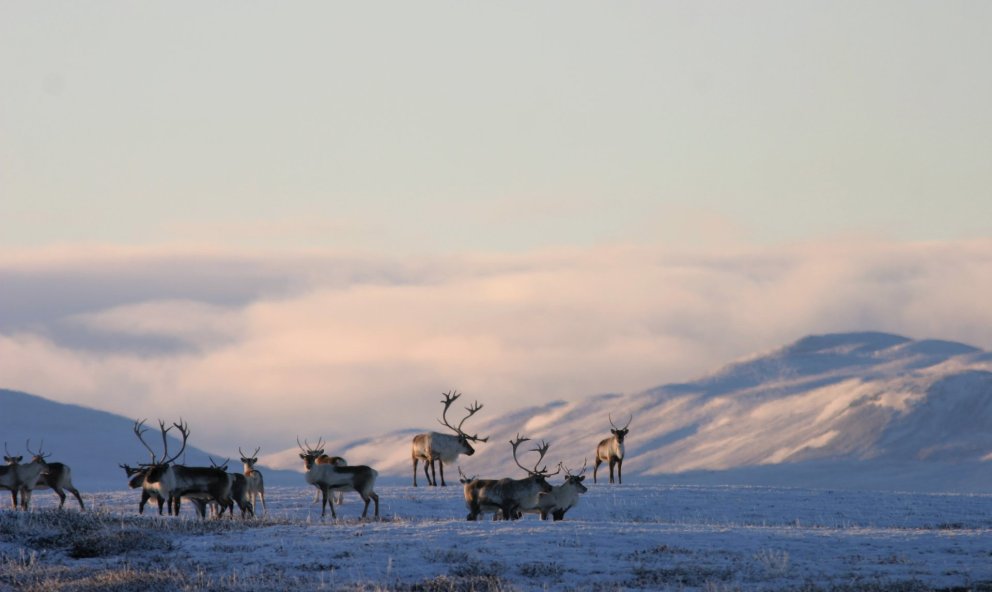Things to Do in East Iceland in Winter
1. Spot Wild Reindeer in Their Winter Habitat
Meet East Iceland’s most unique residents: wild reindeer. This is the only region in the country where herds still roam free across open tundra and snow-covered valleys.
Introduced from Norway in the 18th century, Iceland’s reindeer have long since adapted to the dramatic landscapes of the East. While found here year-round, these social creatures spend summers high in the remote highlands. Reindeer typically descend toward the coast in winter, when food becomes scarcer and temperatures drop.
That’s what makes winter the prime season for reindeer spotting, one of the most unforgettable things to do in East Iceland. If you’re lucky, you might see them grazing near the Ring Road or silhouetted against the snowy peaks above the fjords. Travelers dreaming of close encounters may visit the Reindeer Park in Fellabær for an opportunity to pet and feed rescued reindeer.
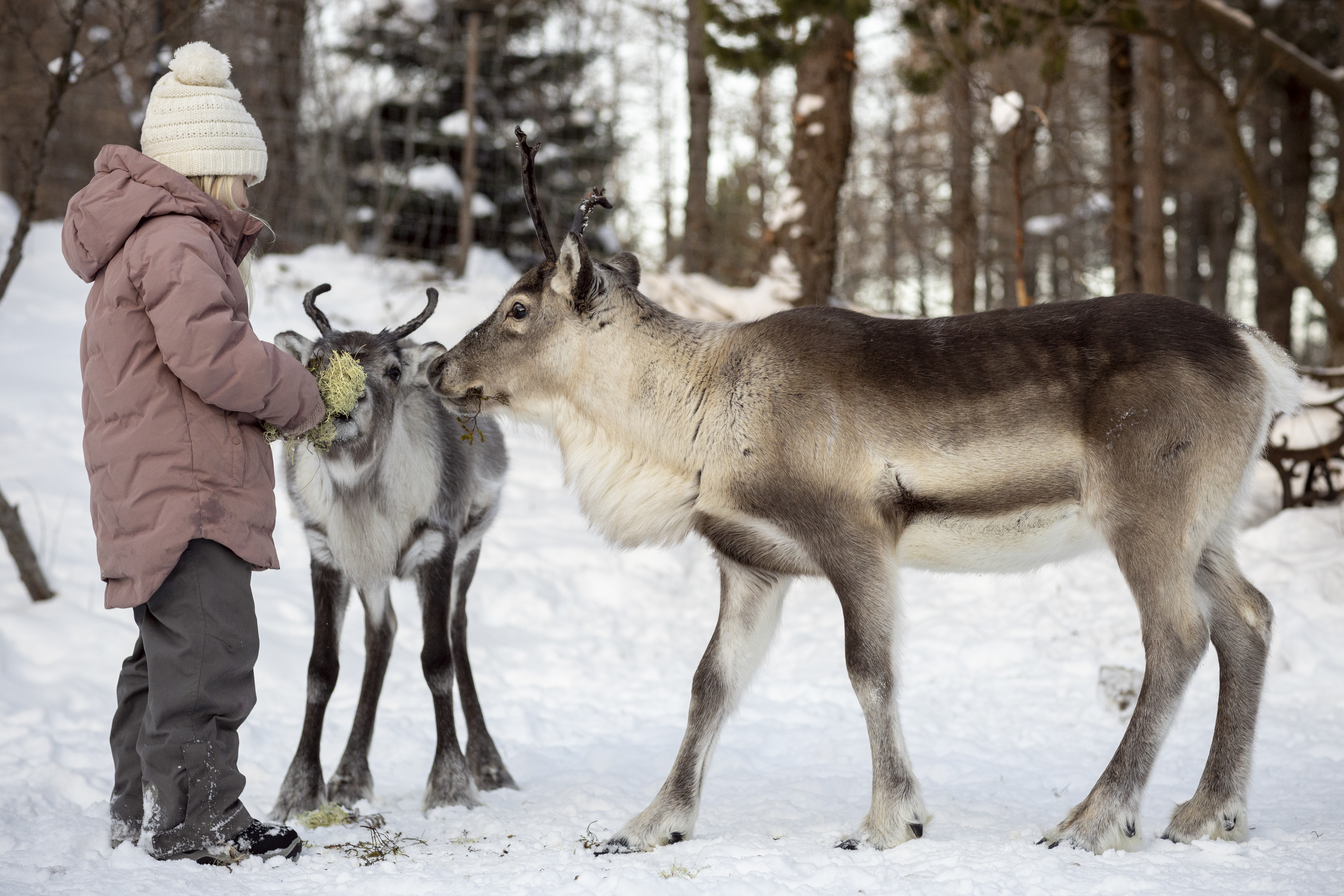
Photographer: Ragnhildur Aðalsteinsdóttir
2. Ski the Slopes at Oddsskarð and Stafdalur
The snowy season sets the stage for a magical experience of Iceland’s great outdoors. For adrenaline chasers, downhill skiing guarantees maximum thrills. Luckily, skiing opportunities abound in winter, particularly in the unspoiled peaks that circle the eastern fjords.
The premier destination for this snow adventure is Oddsskarð, a downhill ski area carved into a mountain pass high above the fjords. This beloved ski spot comes to vibrant life in the heart of winter. Hop on the resort's lifts to rise up in the air, to uncrowded slopes that sit between lush valleys.
Another favorite is Stafdalur, perched above the coastal town of Seyðisfjörður. It features three lifts and runs suited to all levels, along with a 5-kilometer (3.1-mile) trail for Nordic skiing. Equipment rentals and snowboarding are also available, making it a welcoming stop for anyone eager to embrace Iceland’s winter spirit.
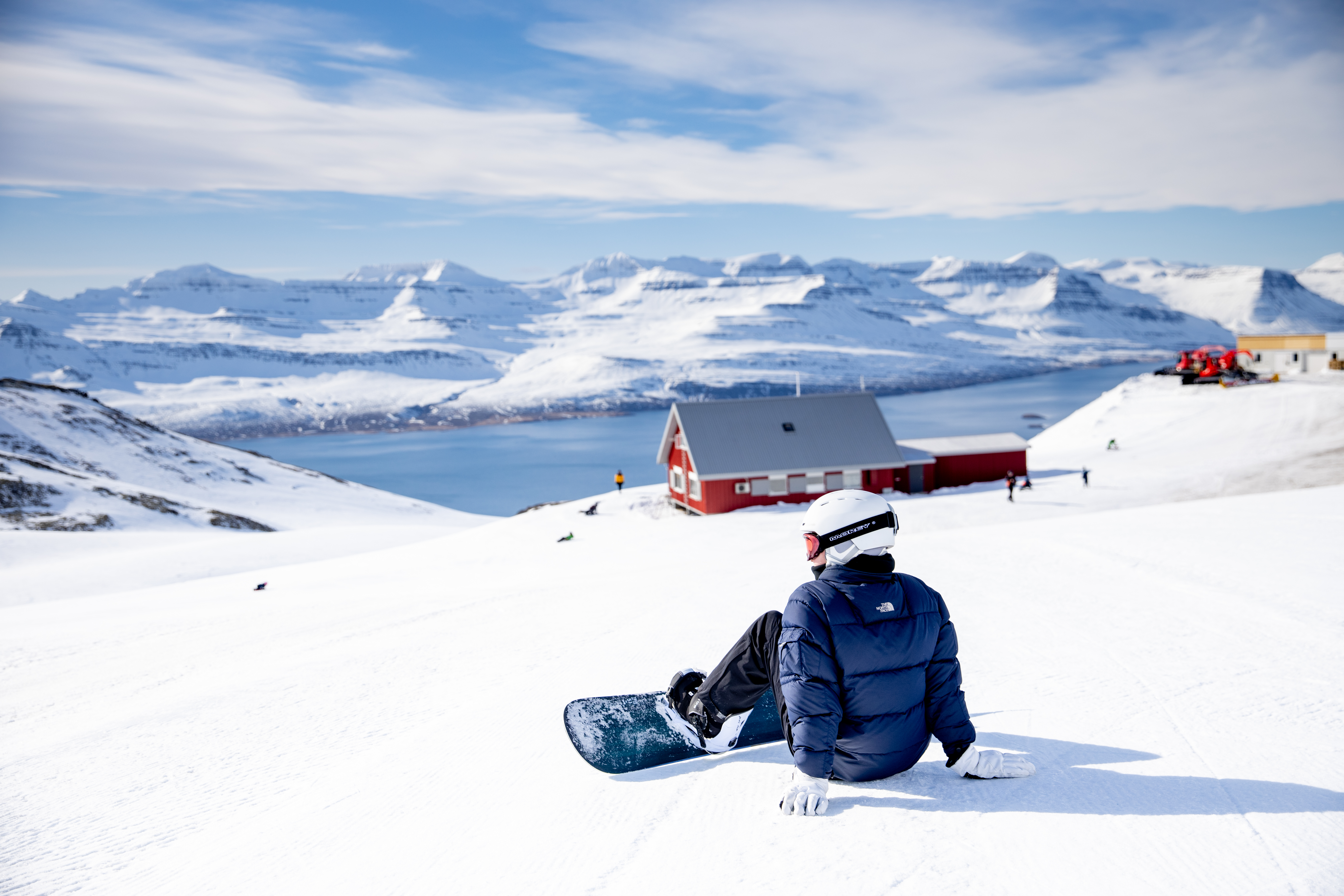
Photographer: Icelandic Explorer - Gunnar Freyr Gunnarsson
3. Glide Through Snowy Forests on Cross-Country Trails
Not every adventure requires an adrenaline rush. For a quieter way to connect with the winter landscape, cross-country (or Nordic) skiing is one of the most rewarding things to do in East Iceland.
Travelers can embrace the Scandinavian tradition by gliding along pristine, track-set trails, exploring the snow-dusted valleys and forests in solitude. The ski areas, like Stafdalur and Oddsskarð, offer dedicated routes. For a unique experience, head inland to Hallormsstaður, Iceland’s largest forest. Here, you can ski through sheltered woods of pine and birch, a magical contrast to the open mountain slopes.
For experienced thrill-seekers and those looking to connect with the local ski culture, consider joining the annual Austurland Freeride Festival. Staged around Oddsskarð, this grassroots event features guided backcountry expeditions into some of Iceland’s steepest and deepest terrain.
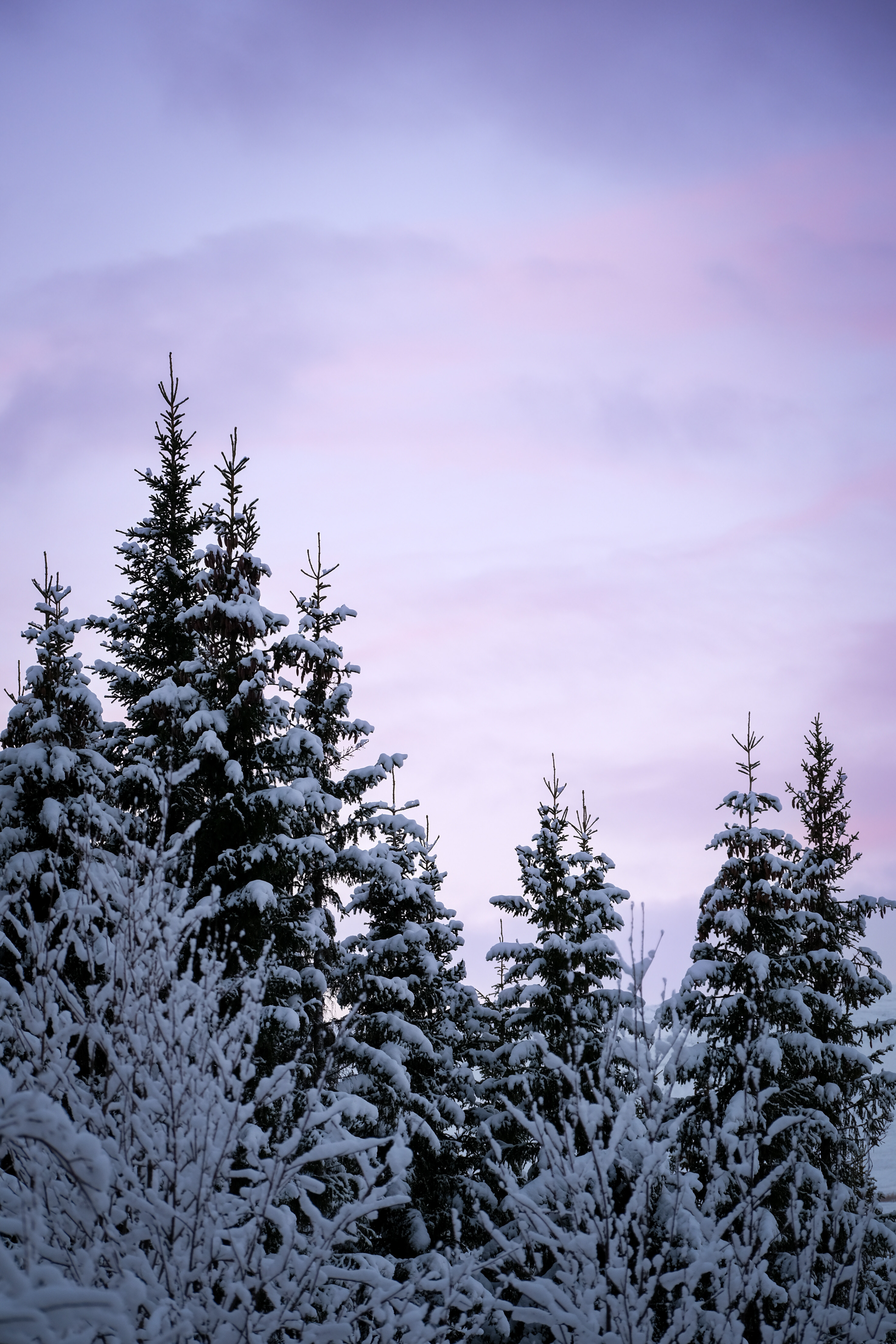
Photographer: Lilja Sigríður Jónsdóttir
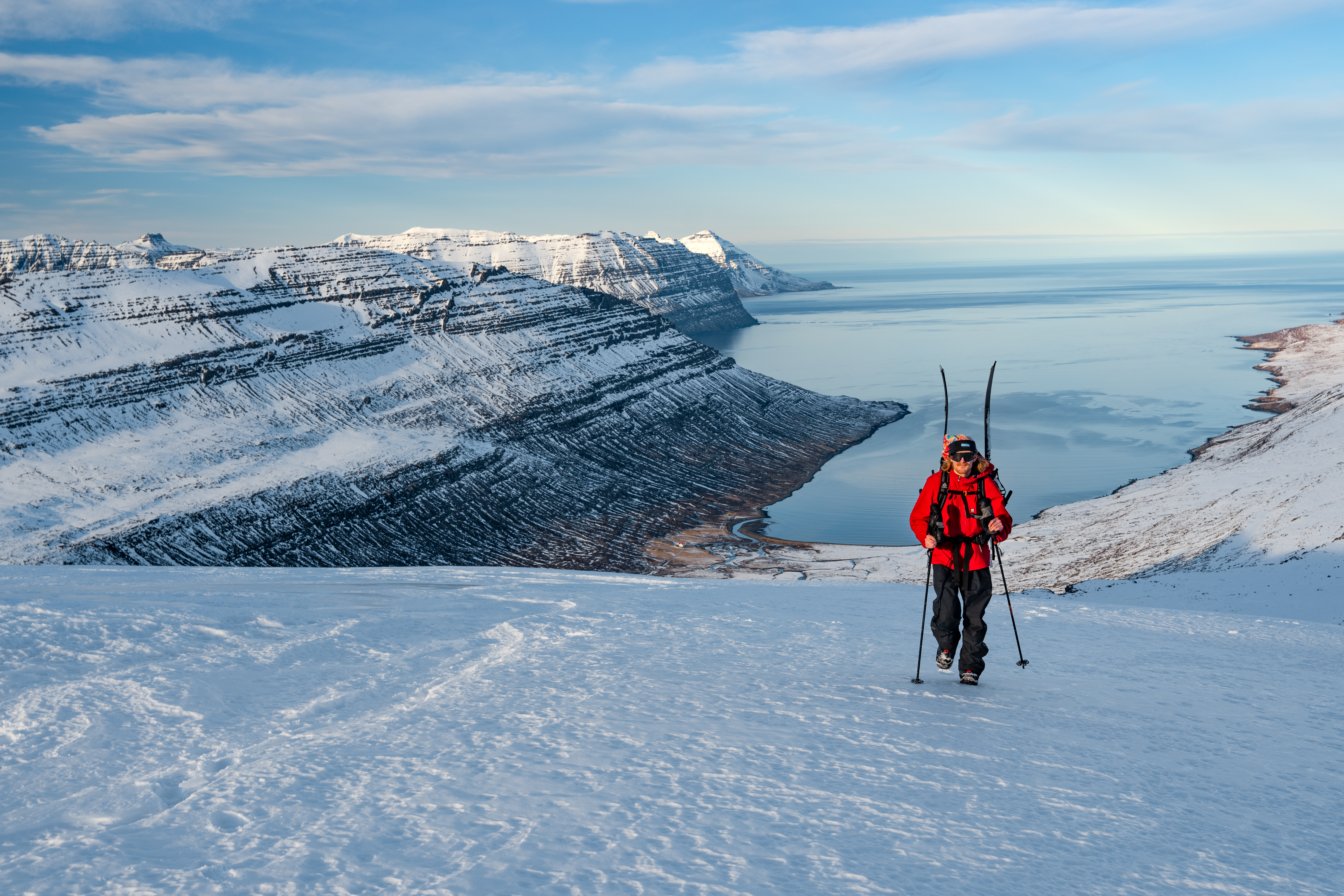
Photographer: Chris Burkard - Austurland Freeride Festival
4. Explore Remote Valleys on a Super Jeep Tour
As winter blankets East Iceland, thick snow and ice often transform the region’s interior into a world few vehicles can reach. That’s where the mighty Super Jeep comes in. With colossal tires and reinforced suspension, these custom 4x4s are purpose-built to conquer Iceland’s winter terrain.
Hiring a local guide with one of these specialized vehicles is an adventure in itself. Guided Super Jeep tours venture into secluded highland valleys, frozen waterfalls, and breathtaking viewpoints hidden deep beneath the snow. They’re essential for exploring the remote highlands near Mt. Snæfell, where winter tours often seek out wild reindeer grazing against the white expanse.
In heavy-snow winters, a Super Jeep is often the safest way to reach the striking basalt cliffs of Stuðlagil Canyon. Some tours continue into the highlands north of Vatnajökull, visiting glacial outwash plains and secluded plateaus few travelers ever see. Traveling on a Super Jeep unlocks remote corners, offering an intimate glimpse of East Iceland’s rugged, isolated beauty.
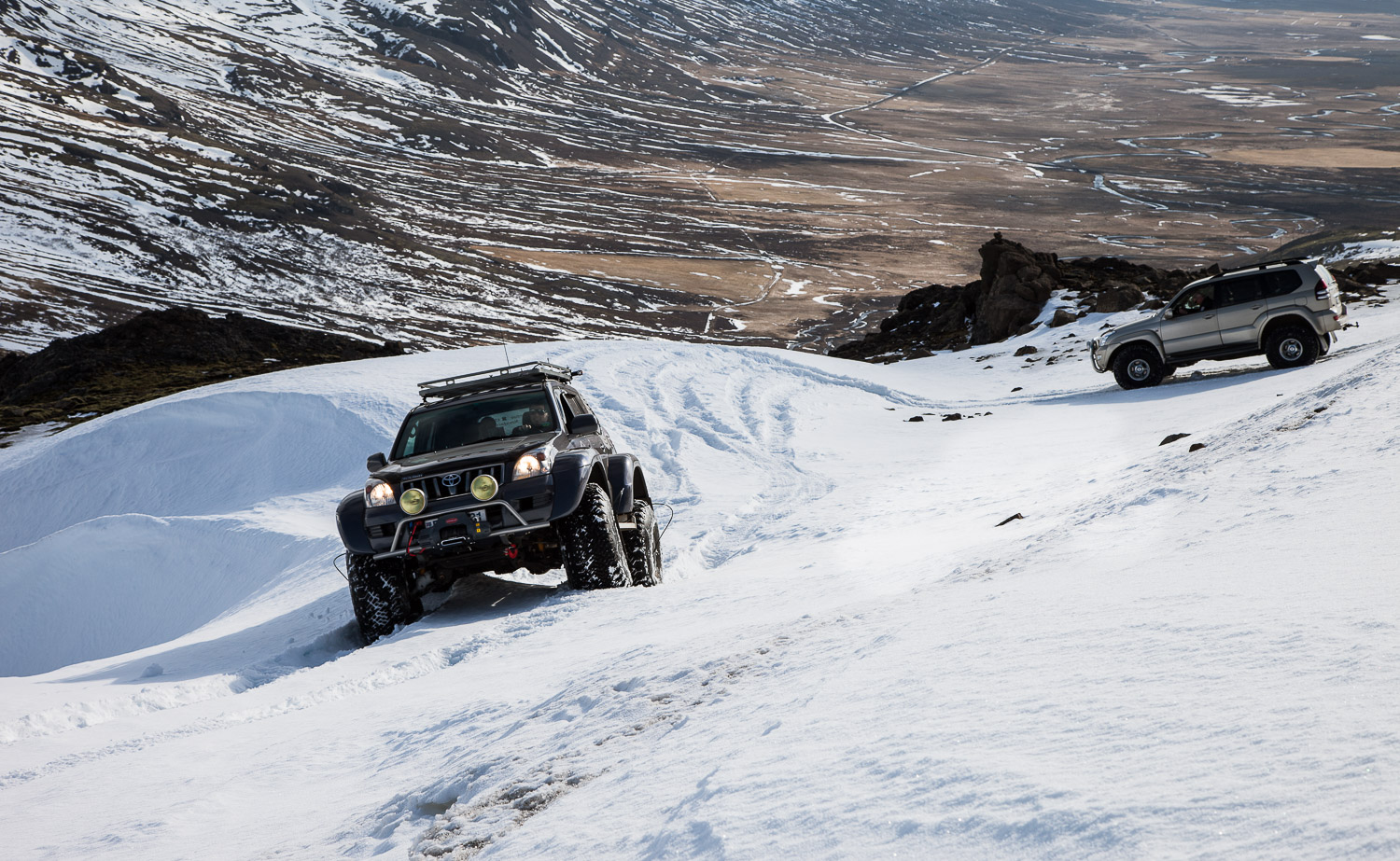
Photographer: Tinna Adventure
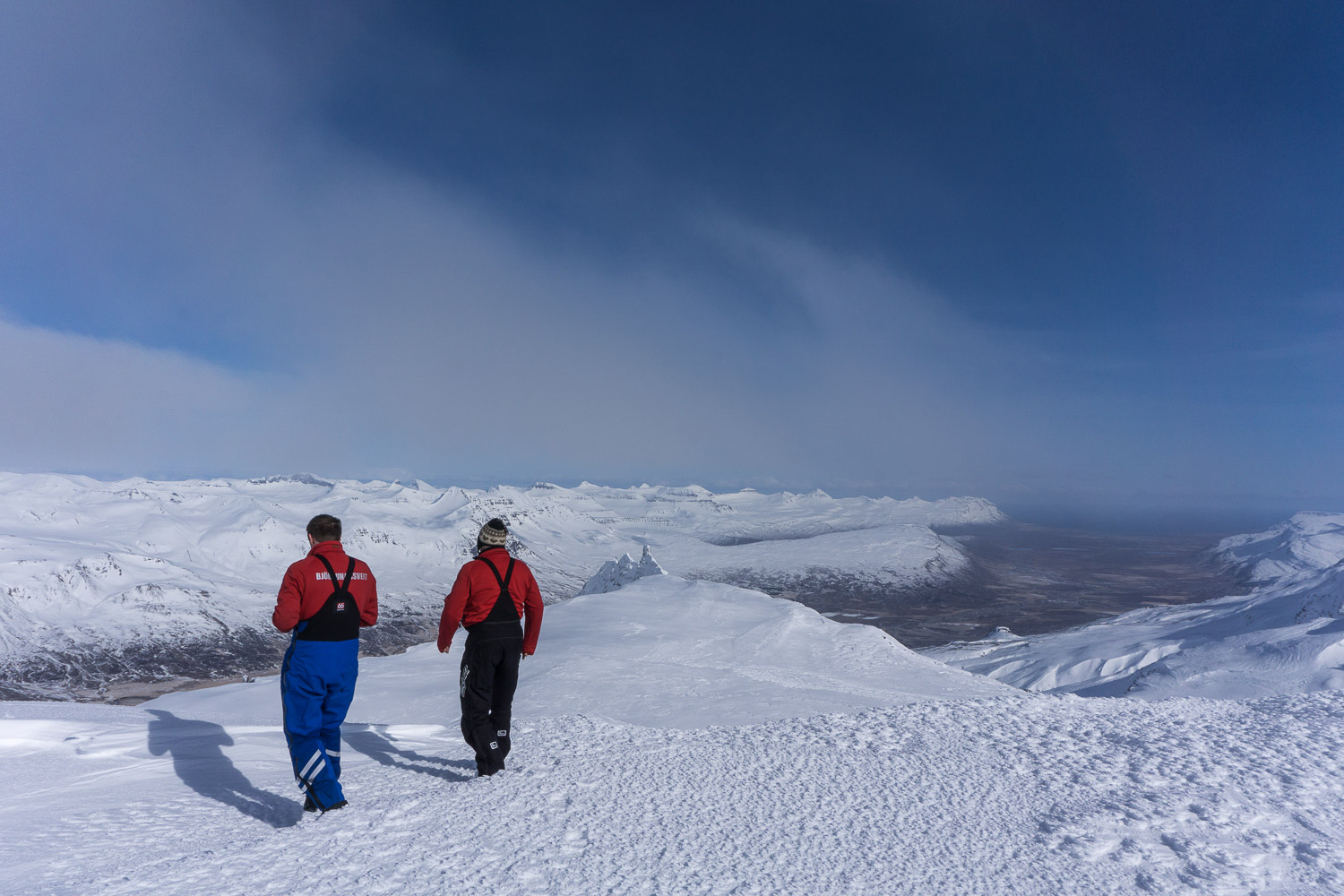
Photographer: Tinna Adventure
5. Slow Down With Snowshoe Tours in Peaceful Landscapes
The most rewarding things to do in East Iceland often involve wandering through snow-clad wilderness. And if you want to linger in the enchanting scenery, few activities are better than snowshoeing.
Snowshoe tours invite travelers to take in winter’s frosted landscapes at a gentle, contemplative pace. With lightweight gear that evenly distributes your weight, you can glide over deep snowdrifts and access serene, hard-to-reach areas. It’s a slow journey, allowing you to savor the stillness of the remote fjords, forests, and valleys.
Popular spots for snowshoeing in East Iceland include the tranquil trails around Seyðisfjörður. Local guides from Eastfjords Adventures offer tours for all abilities.
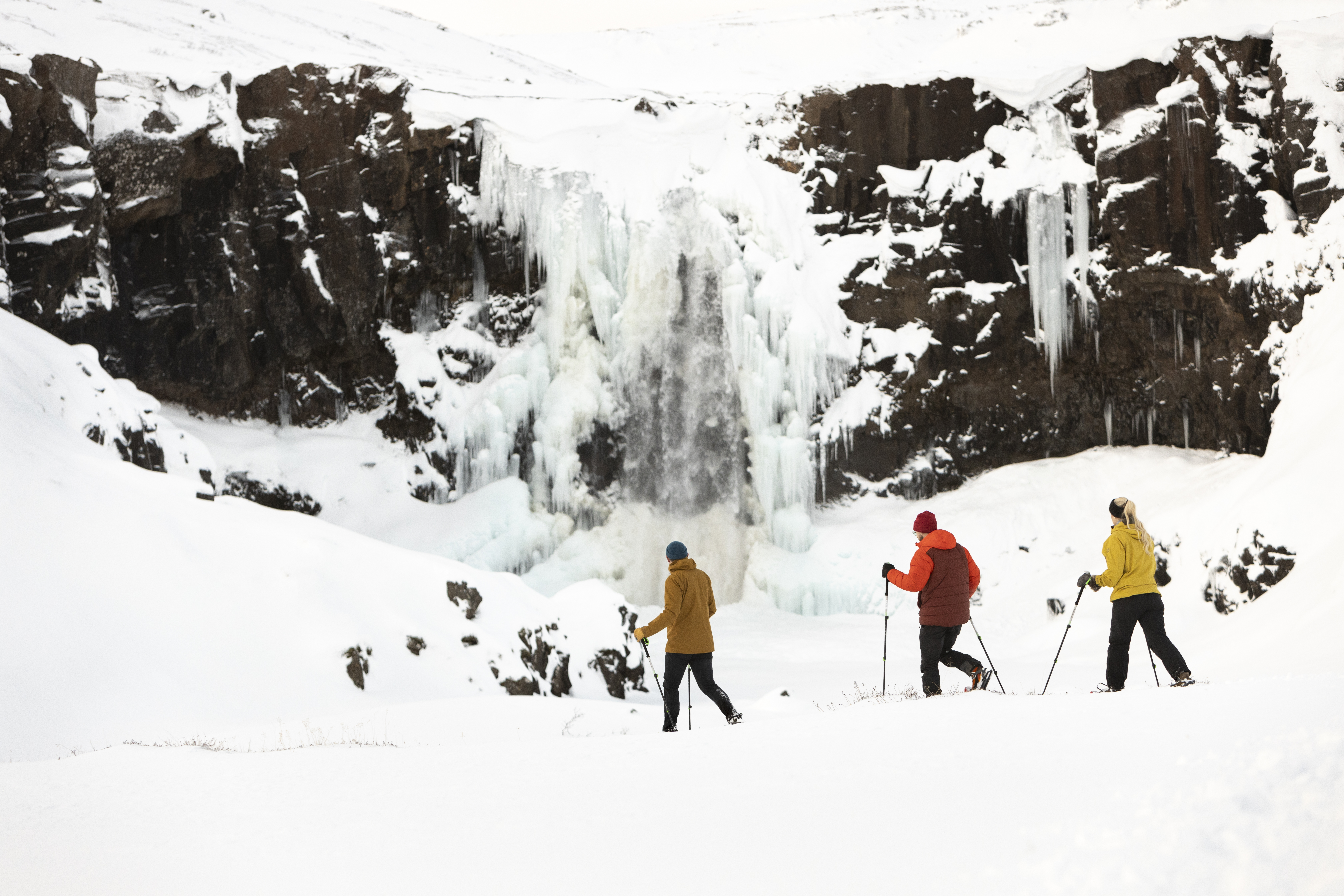
Photographer: Ragnhildur Aðalsteinsdóttir
6. Warm Up in Natural Hot Springs
After days of snow and ice, there’s no better way to thaw than slipping into nature’s geothermal warmth. Outdoor bathing is a cherished Icelandic tradition, and one of the most soothing things to do in East Iceland during winter.
The region’s main destination is Vök Baths, a modern geothermal spa nestled on the banks of Lake Urriðavatn near Egilsstaðir. Its floating pools draw naturally heated water from geothermal springs beneath the lake. Fun fact: these waters are the only hot spring in Iceland certified as drinkable. Soak in the steam, then enjoy a cold plunge in the lake or unwind in the sauna as snow drifts past.
Although East Iceland isn’t known for its wealth of geothermal attractions, many towns feature their own cozy, local swimming pools.
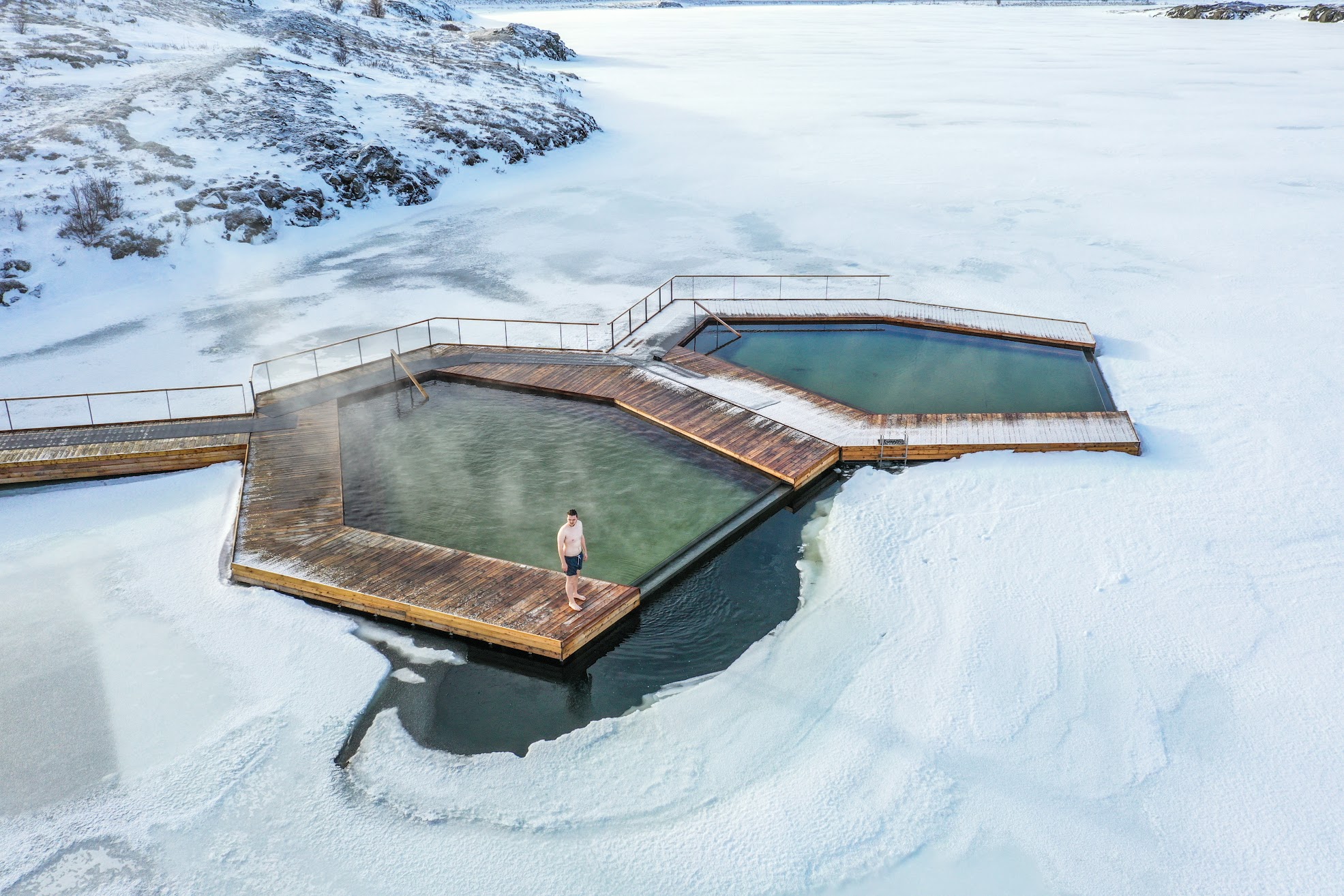
7. Wander Through Quiet Forest Walks and Easy Winter Hikes
If you’re after a slower pace between the glaciers and fjords, East Iceland offers plenty of gentle trails that reveal its softer side. Away from the rugged peaks and icy passes, serene forest paths and short scenic walks invite peaceful winter exploration.
The most notable destination for nature walks is Hallormsstaður Forest, Iceland’s largest forest and a rare green oasis in an otherwise stark landscape. In winter, its sheltered trails near Lake Lagarfljót provide a welcome respite from fierce coastal winds. It’s ideal for a quiet, easy hike among the snow-dusted birch and spruce trees.
Other rewarding winter strolls include the short Fardagafoss Waterfall hike just outside Egilsstaðir, where frozen cascades glisten against basalt cliffs. The coastal paths of Djúpivogur are also perfect for an easy walk along the harbor and sculptures by the sea.
East Iceland is truly a gem, whether you’re looking for a short morning walk or a tranquil afternoon in nature. These forest paths provide some of the most peaceful things to do in East Iceland during the quieter winter months.
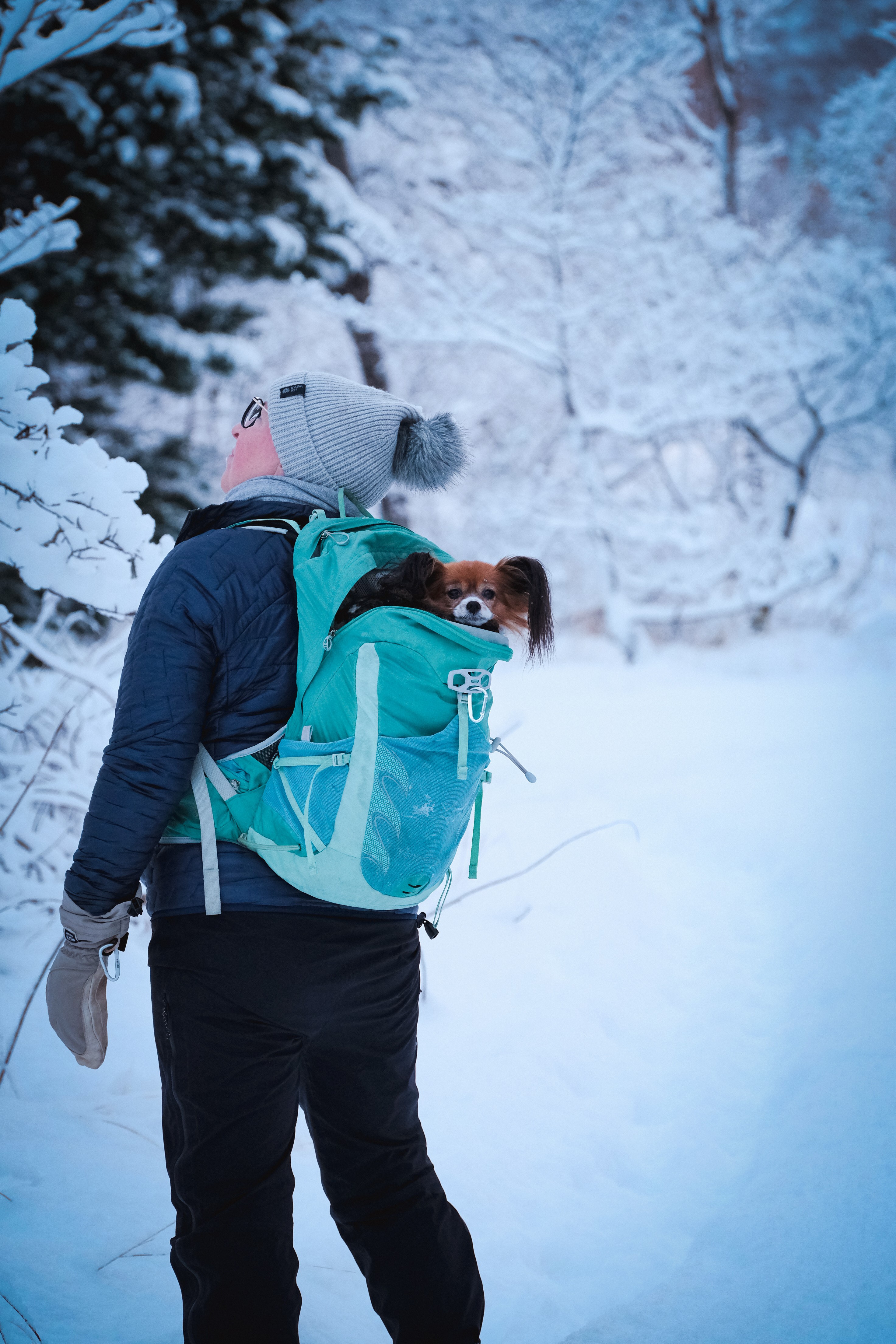
Photographer: Lilja Sigríður Jónsdóttir
8. Try Your Hand at Axe Throwing for a Quirky Twist
For an unexpected yet incredibly fun activity in East Iceland, channel your inner Viking with a round of axe throwing. The local company East Highlanders, based in Egilsstaðir, offers this quirky activity, a playful way to add a dash of action to your winter itinerary.
While the sport is a modern invention, it’s inspired by the Viking Age, when axes were essential tools and formidable weapons. Tossing an axe at a wooden target connects you, in spirit, to that warrior heritage. But of course, it’s with all the safety (and laughter) of a modern sport. Sessions take place outdoors, surrounded by the forests of East Iceland, making it an unforgettable mix of adrenaline and atmosphere.
9. Chase the Northern Lights Across the Eastfjords
No list of winter activities is complete without the pursuit of the mesmerizing aurora borealis. It’s easily one of the best things to do in East Iceland in winter. The region enjoys some of the darkest, clearest skies in the country, ideal conditions for witnessing nature’s most spellbinding light show.
From September to April, when the nights are long, the skies come alive with the ethereal glow of the Northern Lights. The experience is never guaranteed, but when it appears, it’s unforgettable; a silent, shimmering spectacle over the mountains and fjords.
The best spots to pull over and watch the celestial show include:
- Borgarfjörður Eystri: A small, secluded village nestled within the fjord, offering a wide, unobstructed view of the northern sky.
- Eastfjords Coastline: Any pull-off along the quiet, winding coastal roads provides an excellent vantage point away from artificial light.
- The Outskirts of Egilsstaðir: Just a short drive beyond town, around Lake Lagarfljót or Hallormsstaður Forest, the darkness deepens and the lights often blaze overhead.
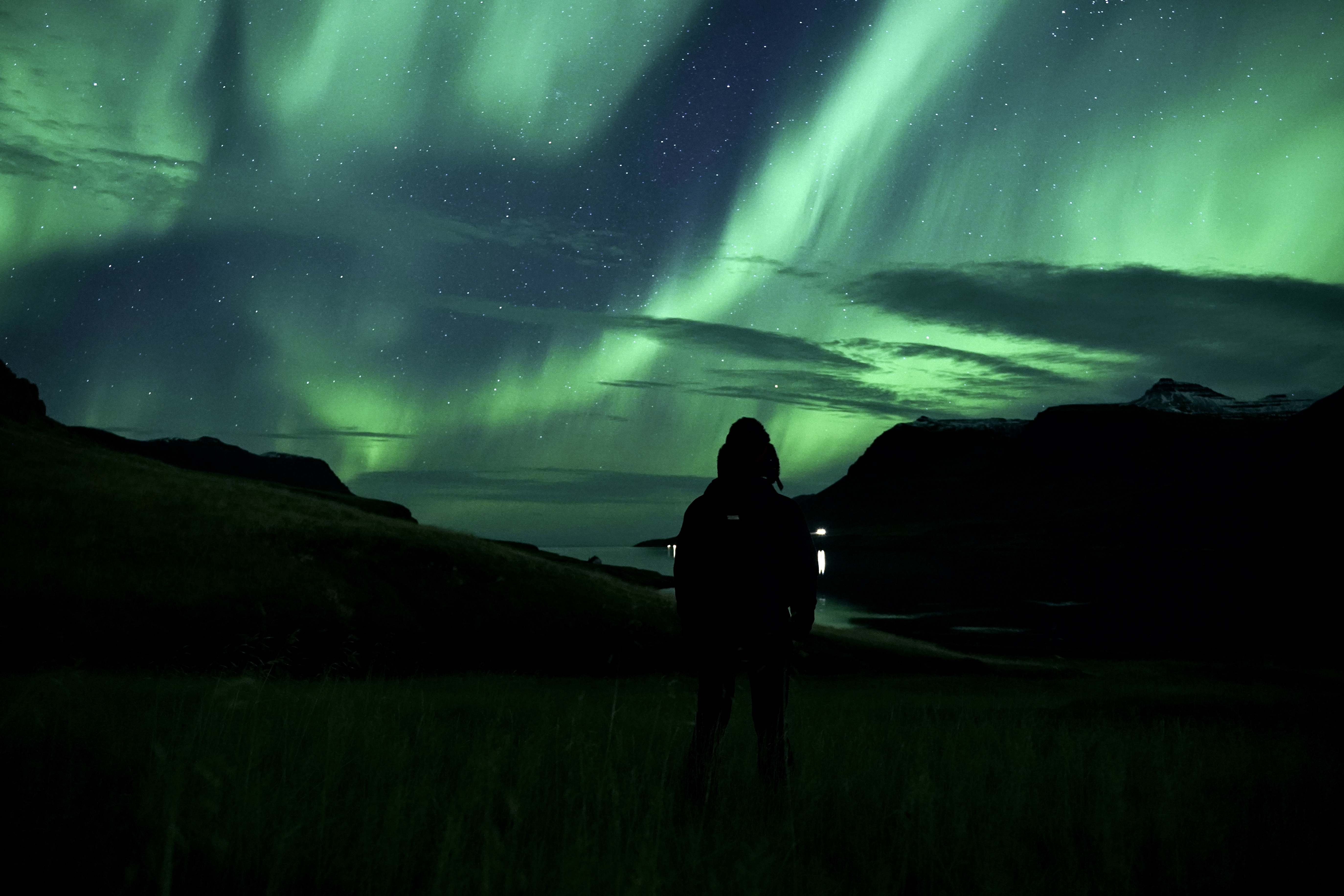
Photographer: Dusky Mercak
Plan Your East Iceland Winter Road Trip
Embarking on a winter road trip through the Eastfjords is a rewarding adventure, one that blends dramatic scenery with solitude. With the right preparation, you can safely enjoy all the remarkable things to do in East Iceland at your own pace. Here are the key tips for preparing your journey:
- Secure a 4x4 Vehicle: Rent a four-wheel-drive vehicle in winter. Snow, ice, and unpaved fjord roads (especially the mountain passes) require the stability and traction of a proper off-road vehicle.
- Monitor Road and Weather Conditions: Before setting out each day, check the official websites for road conditions (road.is) and weather forecasts (vedur.is). Conditions can shift quickly, sometimes leading to sudden closures of mountain routes or coastal passes.
- Allow for Extra Travel Time: Distances in the Eastfjords may seem short on a map, but winter driving is slow. Expect journeys to take 30–50% longer than GPS estimates, especially if snow or wind sets in.
- Pack Warm and Waterproof Layers: Icelandic weather demands layers. Bring thermal base layers, a waterproof and windproof outer shell (jacket and pants), warm hats, gloves, and waterproof hiking boots.
- Book Accommodation in Advance: While East Iceland is quieter in winter, many smaller villages have limited hotel capacity. Booking your stays in Egilsstaðir, Seyðisfjörður, Höfn, or other stops ahead of time is highly recommended.
- Respect the Darkness and Drive Smart: Daylight hours are short in mid-winter. Plan your driving for midday, and never drive off-road. If you encounter a blizzard or severe white-out conditions, pull over and wait it out.
Discover the Best of Austurland in Winter
From soaking in warm geothermal waters and trekking to ice caves, to chasing the Northern Lights, these unique things to do in East Iceland prove that winter is truly the region's most captivating season. Pack wisely, drive carefully, and prepare to discover a rugged, peaceful, and utterly magical corner of Iceland.
FAQs About Things to Do in East Iceland in Winter
What are the must-sees in East Iceland?
Must-sees include the dramatic fjord landscapes, the colorful town of Seyðisfjörður, the Hallormsstaður Forest, and the powerful Stuðlagil Canyon. Don't miss a chance to soak in the Vök Baths or look for reindeer in the highlands.
Is East Iceland worth visiting?
Yes, East Iceland is absolutely worth visiting for its uncrowded serenity, dramatic fjords, unique forests, and the best opportunities to spot wild reindeer. It offers a quieter, more authentic experience than the busier South and West.
What to do in Southeast Iceland?
In Southeast Iceland, the focus is on glacier adventures like ice caves and glacier hikes on Vatnajökull, and exploring the Jökulsárlón Glacier Lagoon and Diamond Beach. The town of Höfn is also a great place to stop for its famous lobster.
Is the east or west side of Iceland better?
Neither side is strictly "better"; they offer different experiences. The West (including Snaefellsnes) is known for its concentrated natural wonders and diverse geology, while the East is prized for its remote, dramatic fjords, tranquility, and unique wildlife.
What is considered East Iceland?
East Iceland (Austurland) generally covers part of the highland region from the massive Vatnajökull glacier in the south and from Eystrarhorn mountain up to the northern edge of the Eastfjords. It is defined by its deep, rugged fjords and the central hub of Egilsstaðir.
What is the largest town in East Iceland?
The largest town and regional hub of East Iceland is Egilsstaðir, located on the banks of Lake Lagarfljót. It serves as the main service and transportation center for the entire region.
Can you see the Northern Lights in East Iceland?
Yes! East Iceland’s dark skies and minimal light pollution make it one of the best places in the country to see the Northern Lights. From September to April, you can often spot the aurora dancing above the fjords, especially around Borgarfjörður Eystri, Hallormsstaður Forest, and Lake Lagarfljót. For the best chance, check the aurora forecast at vedur.is, dress warmly, and find a viewing spot away from town lights.

